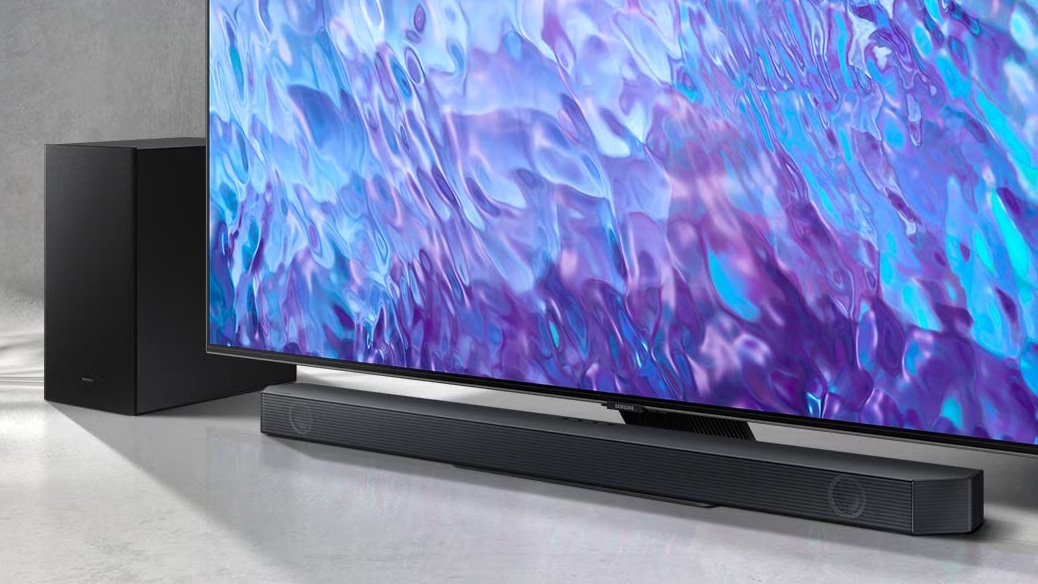
There are plenty of methods, at plenty of price points, for you to achieve some Dolby Atmos-style spatial audio. The best soundbars are obviously high on the list, and soundbars like this Samsung HW-Q600C here on review (which uses actual, physical speaker drivers in an effort to create some sonic ‘height’ rather than complicated digital sound processing algorithms) makes plenty of sense too.
The HW-Q600C will also please many because, unlike various one-box solutions, it includes a separate wireless subwoofer. Yet it doesn’t cost an absolute arm and a leg, making it seem like an even more sensible soundbar option for the best TVs of 2024. Or, indeed, the best TVs under £1000, to avoid spending your life's savings.
But obviously there’s more to creating Dolby Atmos sound than simply looking good on paper. The Samsung HW-Q600C needs to perform in the most exacting of circumstances: in your front room, just underneath your television. So does it have what it takes to turn your head and deliver convincing spatial audio goodness?
Samsung HW-Q900C: Price & Availability
The Samsung HW-Q600C is on sale now, and in the United Kingdom the asking price tops out at £549. In America the threshold is $599, while in Australia it’s AU$799. Spend a moment eyeing-up the embedded shopping widgets on this page, however, and you'll likely find an even better deal.
The world is not short of Dolby Atmos-enabled soundbars at this sort of money, of course. The Sony HT-G700 is an obvious alternative, and if you can live without a subwoofer the Bose Smart Soundbar 600 is a viable option too. So don’t just chuck your money at Samsung without reading on…
Samsung HW-Q900C review: Features & What's New?

The HW-Q600C features a total of nine drivers: there are three at either end of the front panel, handling the left and right channels of audio information; there’s another in the centre, dealing with the centre-channel stuff; and there are a couple more facing upwards and using Samsung’s ‘Acoustic Beam’ technology to try and create the ‘height’ sensation of a DTS:X or Dolby Atmos soundtrack.
However, how big thee drivers are, what shape they are, or what they’re made of, is information that's not forthcoming for no good reason that I can think of.
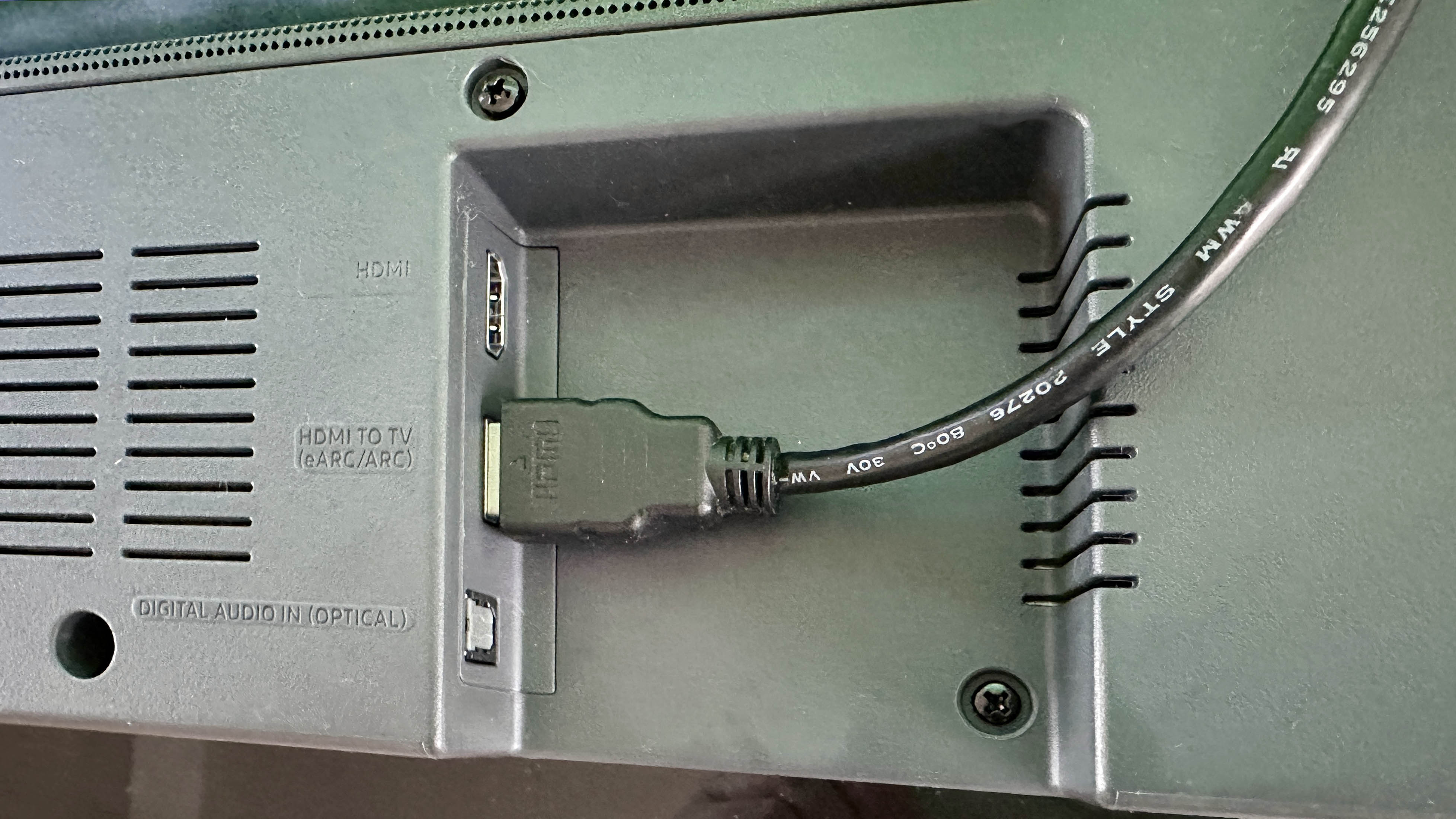
There are a couple of recesses at the rear of the soundbar. One lets you hook up mains power and also has a USB slot that’s used for servicing. The other has a pair of HDMI sockets - one is eARC-enabled - which means 4K passthrough is available. Samsung being Samsung, though, HDR10+ can be part of the passed signal, but not Dolby Vision HDR. Wireless connectivity is available using Bluetooth 5.0 - it’s compatible with SBC and AAC codecs.
The included subwoofer features a socket for mains power at the rear, along with a ‘pairing’ button in case the automatic pairing between sub and soundbar goes awry. At the front, behind some acoustic fabric, there’s a 165mm bass driver handling the low-end audio content. Total system amplification is 360 watts, and it’s of the Class D kind.
The HW-Q600C offers four sound modes: ‘standard’, ‘surround’, ‘game pro’ and ‘adaptive’. There’s really no need to explain those first three, but ‘adaptive’ assesses your content in real-time and attempts to adjust the system’s output accordingly.
And there’s compatibility with Samsung’s ‘Q Symphony’ technology, too - so should you pair it with an appropriate Samsung TV then the screen’s speakers can contribute to the sound rather than leaving it all to the soundbar/subwoofer combo.
Samsung HW-Q900C review: Performance
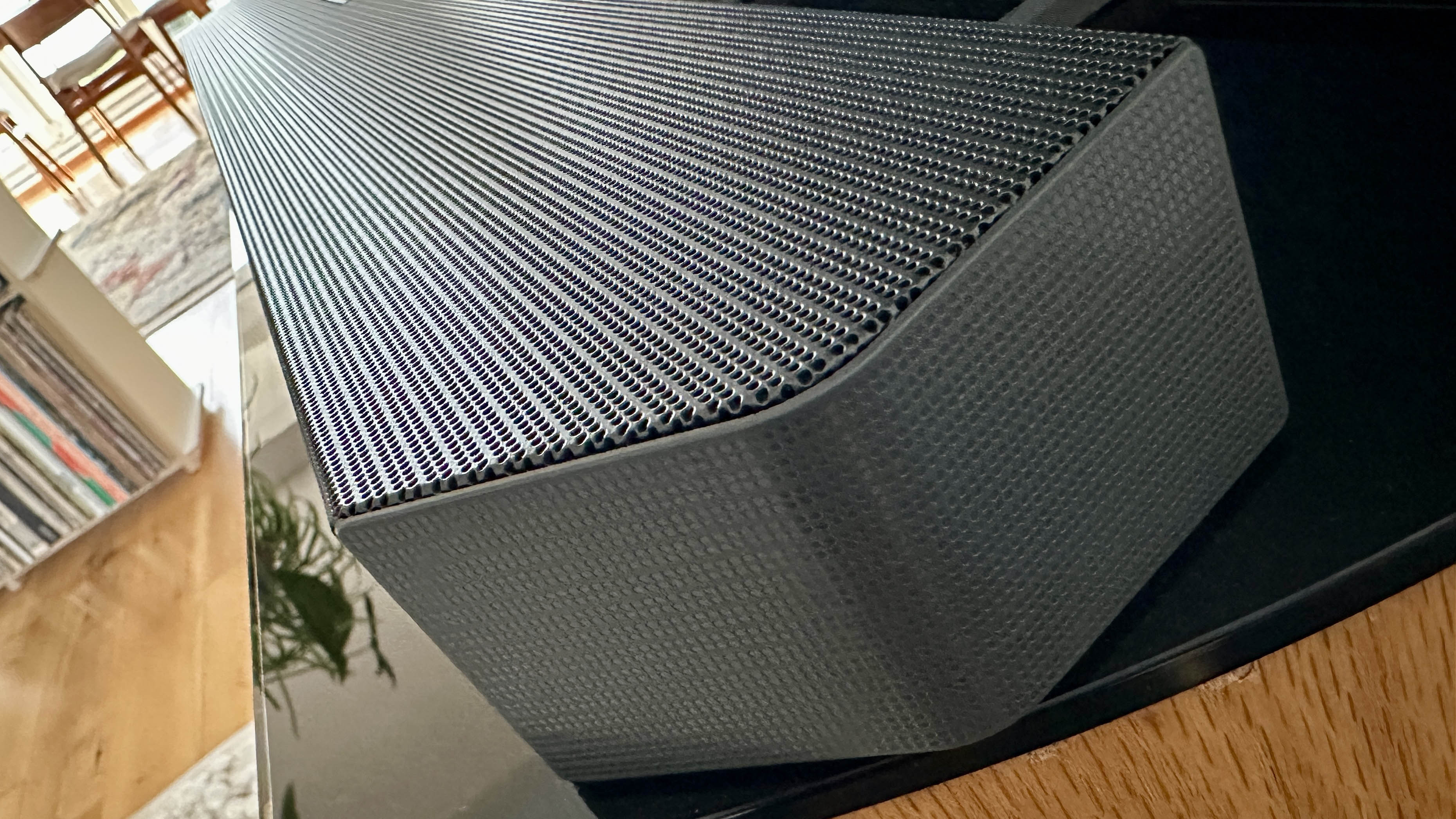
You’d think that a Dolby Atmos-enabled soundbar/subwoofer system would do its best work when given a Dolby Atmos soundtrack with which to work. Well, that’s certainly the case where the Samsung HW-Q600C is concerned - it’s just that its ‘best’ is a slightly mixed bag.
On the plus side (which is, to be fair, the bigger side), the HW-Q600C is a spacious, well-integrated and naturalistic listen - or, at least, it is once you tone down the subwoofer’s contributions.
Straight from the box the subwoofer is altogether too confident and assertive - but it doesn’t take long to calm it down a bit. And once you’ve done so, you’re left with a presentation that’s even from the (bright, crisp) top-end to the (deep, textured) bottom-end. Detail levels are high at every stage, and the amount of attack the system can summon is beautifully judged.
The soundstage this Samsung can create is well-defined and convincing, and it does good work in allowing the gaps and spaces as much emphasis as the sounds themselves. From front to back and left to right, the stage is open and organised, and the HW-Q600C steers effects through these planes with confidence and positivity.
The layout is coherent, and organisation is such that, even when the soundtrack you’re enjoying gets hectic, there’s more than enough elbow room for each element of it to get about its business without being impacted by some other aspect of the sound.
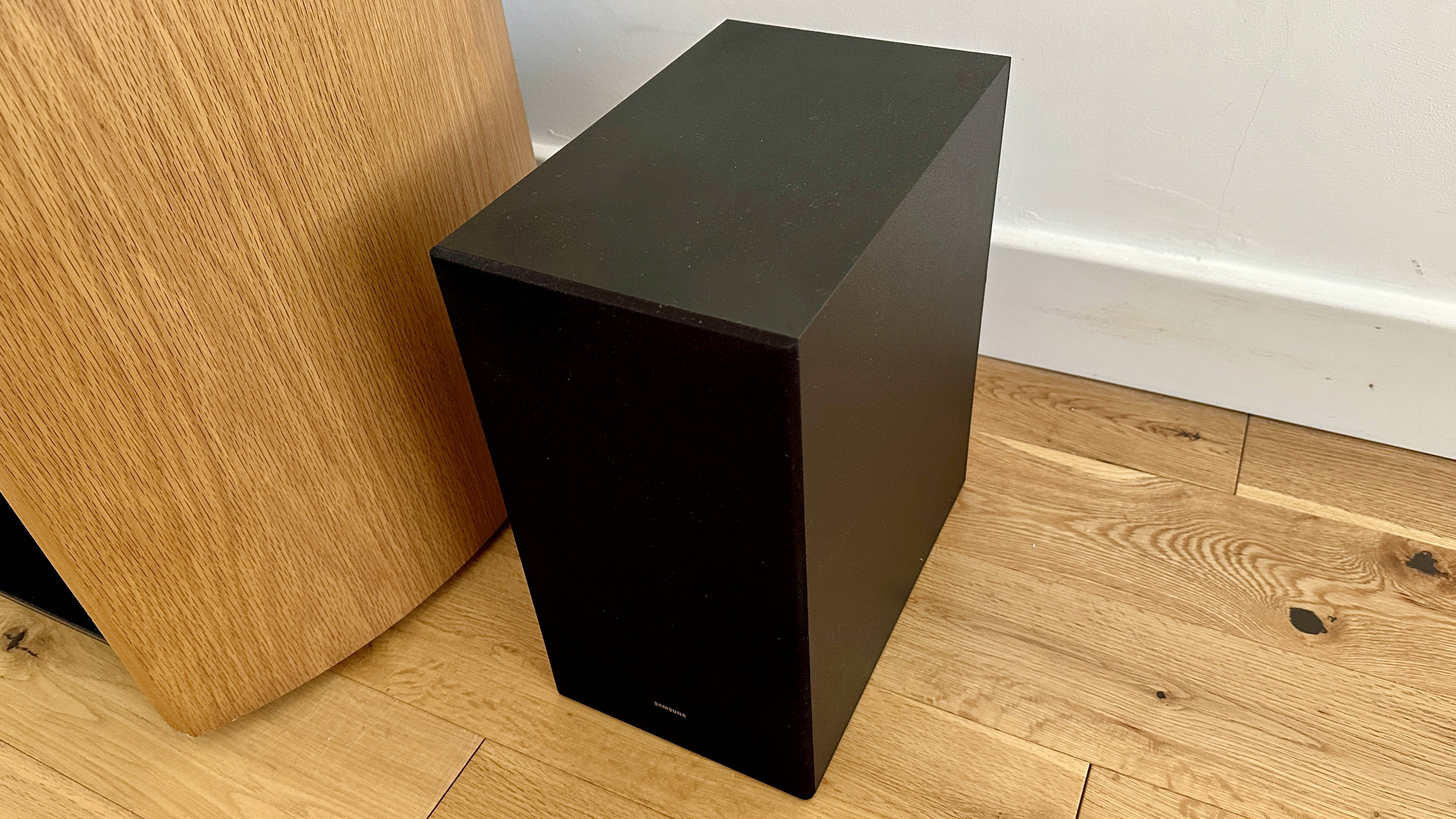
The Samsung is particularly adept through the midrange, despite its apparent shortage of centre-channel drivers relative to the left and right channels. Dialogue projects well, even during the most raucous scenes, and there’s ample information regarding tone, timbre, character and all the rest of it available. Even during those movies where speech plays second fiddle to sound (Christopher Nolan, I’m looking at you), the HW-Q600C is distinct and purposeful through the midrange.
It’s not quite as purposeful when it comes to the ‘height’ element of a spatial audio soundtrack, though. I tested the HW-Q600C with a 48-inch Philips OLED TV in a room with average ceiling height, but the soundbar struggled to project sound to the top of the screen, let alone up towards the ceiling. The sound that’s projected upwards is just as detailed as all the rest of the audio output, but the idea that this Samsung is an ‘immersive’ listen is, I think it’s fair to say, a false alarm.
Neither is the Samsung much cop when it comes to music reproduction, which basically rules it out as one of the best all-in-one speaker systems. Music streamed via Bluetooth sounds a little lumpy and ill-defined - the subwoofer, so prompt and alert when it comes to movies - can trip over its own feet a little when asked to deal with music, and so rhythms don’t sound as natural as they might. Getting a cogent stereo image from all those drivers seems a bit beyond the HW-Q600C, too.
Samsung HW-Q900C review: Design & Usability
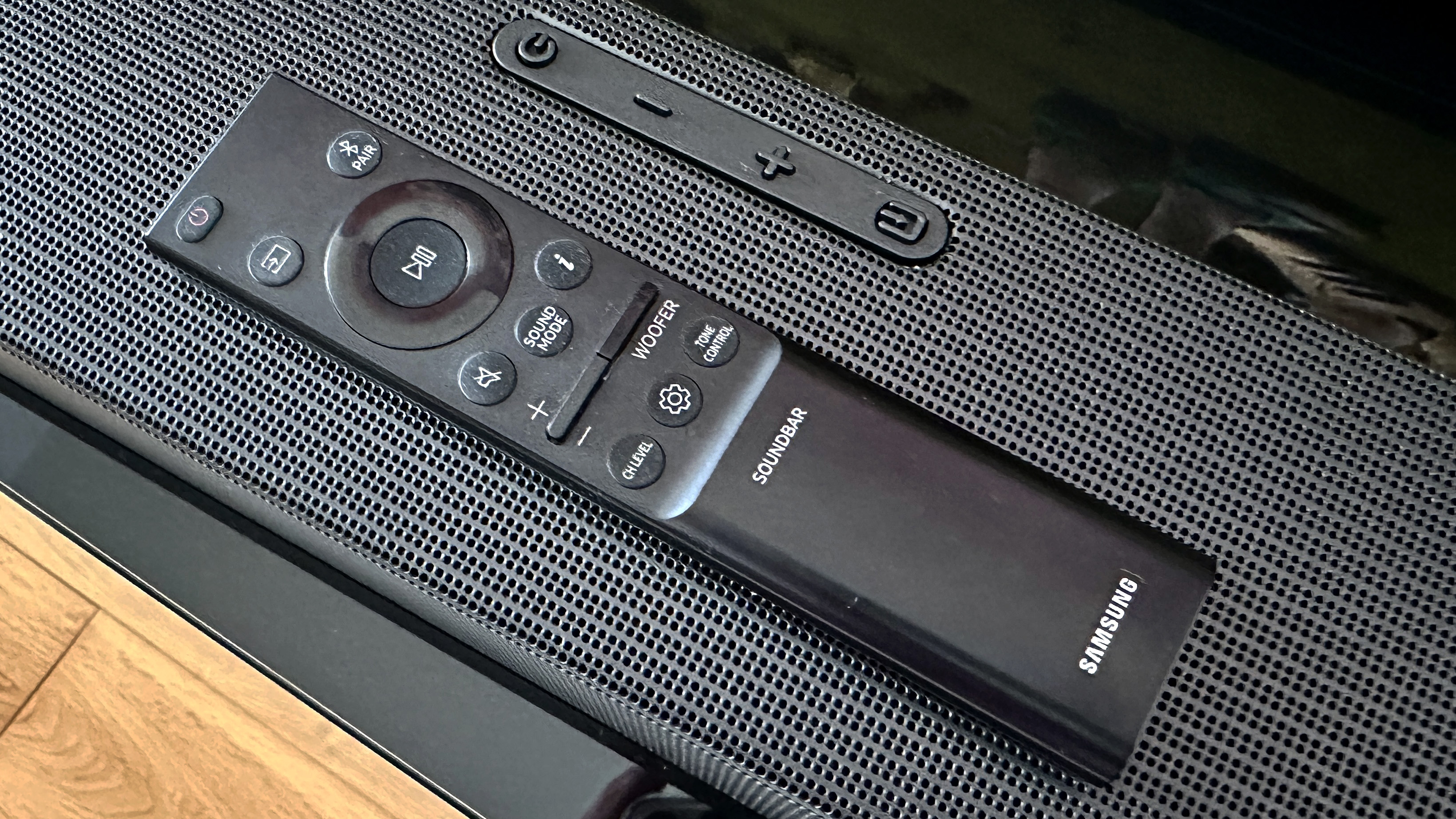
There’s not much room for manoeuvre where the design of a soundbar (or a subwoofer, for that matter) is concerned - or, at least, there isn’t if you want to keep costs to a realistic level. So the Samsung HW-Q600C is an entirely sensible 56 x 1030 x 105mm for the soundbar and an equally unremarkable 343 x 184 x 295mm for the subwoofer.
This scale means the soundbar will fit neatly beneath the best 48-inch TV screens and above, while the subwoofer - thanks in large part to its wireless connectivity - can go anywhere you need it to. As long as it’s within reach of mains power, anyway.
The soundbar, you won’t be staggered to learn, is built almost entirely from plastic. This being Samsung, though, it’s robust and distinctly superior plastic, and the perforated top and front panels combined with the angled ends mean it’s actually not bad-looking. The subwoofer is equally prosaic in its materials - vinyl-wrapped MDF, mostly - and equally accomplished in its standard of build and finish.
As far as usability is concerned, there’s not much to get to grips with here. There are a few controls (‘power on/off’, ‘volume up/down’ and input selection) on the top of the soundbar, and the HW-Q600C is supplied with a little remote control handset that manages to cover every eventuality despite having very few buttons. There’s an extremely brief and indistinct display on the front of the soundbar that lets you know what it’s up to (if you squint hard) too.
There’s no app control available, and getting some Alexa voice control is quite a convoluted process involving both the Alexa and the Samsung SmartThings app. Still, it can be done if you’re prepared to put the time in (and you have an Alexa speaker handy).
Samsung HW-Q900C review: Verdict
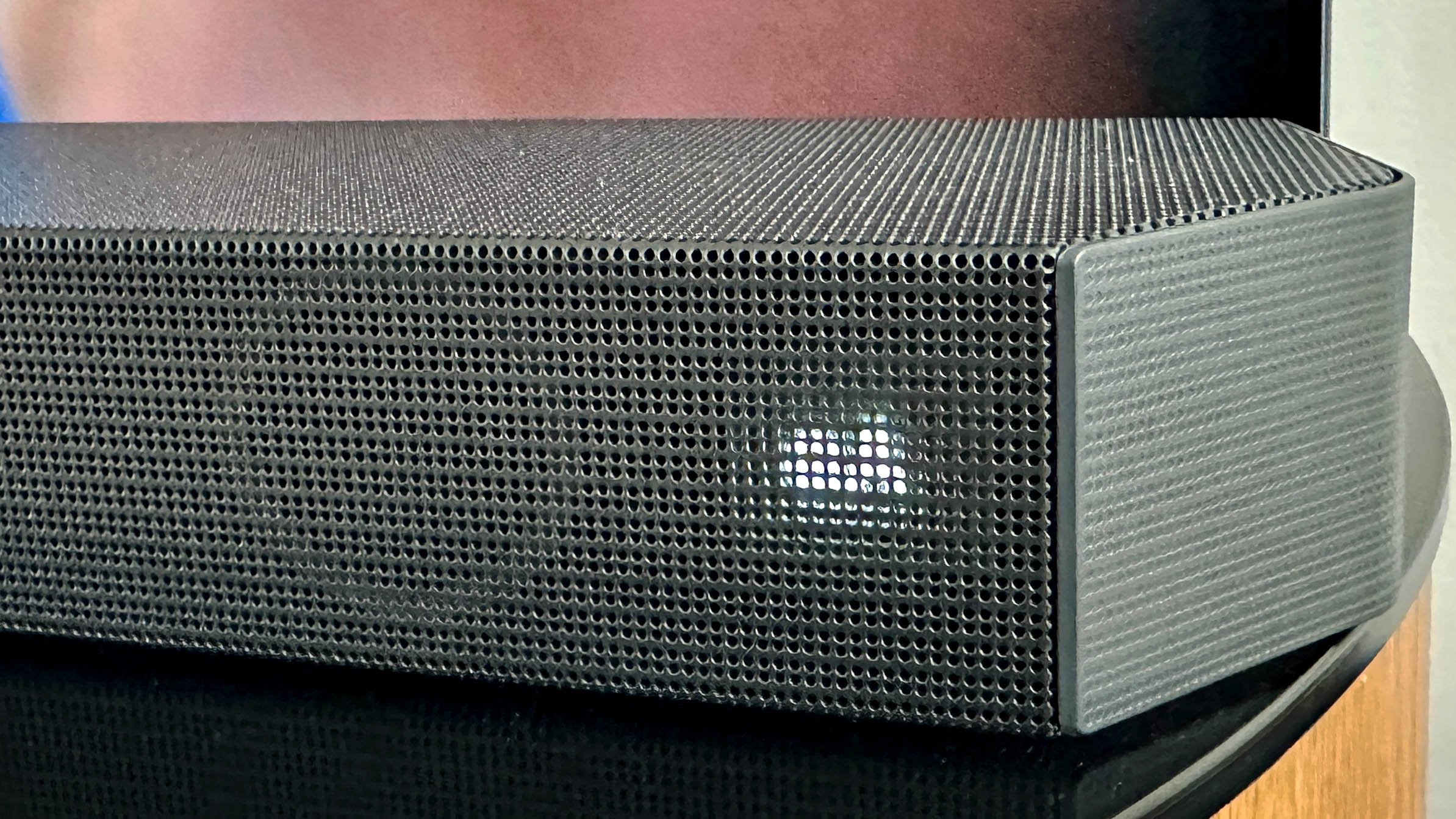
In lots of ways, the HW-Q600C is a solid performer. It’s definitely got ability when it comes to soundstaging, detail retrieval, tonal fidelity and outright low-frequency presence - and if that sounds like enough for you, then this sub-and-'bar combo is a great buy.
However, if you’re lured by the promise of Dolby Atmos (or DTS:X) spatial audio, there’s a good chance the Samsung HW-Q600C may leave you wanting more. But then you may also need to pay more investing in one of the best surround systems or best soundbar options instead.
Also consider
The Bose Smart Soundbar 600 doesn’t travel with a subwoofer, true - but it’s a better bet where the ‘spatial audio’ aspect of performance is concerned. So unless you’re all ‘bout that bass (which is a massive benefit of the Samsung), then it could well be the better bet.







